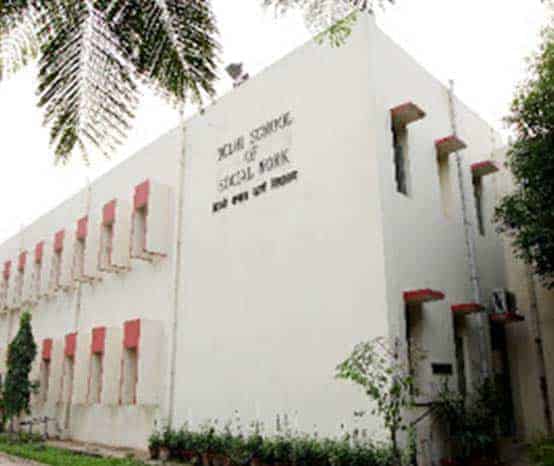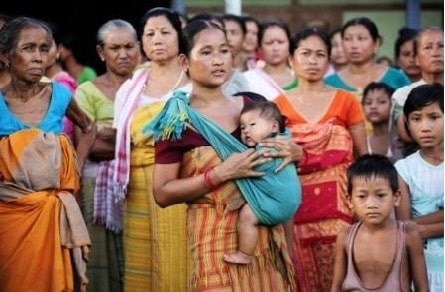The Land of the Gods, a term endearingly given to the state that I call my hometown, has been increasingly building its sanctity by driving away its Muslim population. The culmination of this is finally seen in the burning of Haldwani. This piece questions this ‘sanctity’, a familiar rhetoric of casteism and now islamophobia.
As we speak, the Haldwani region finds itself engulfed in the searing flames of communal violence, a firestorm that had been kindled long ago that is consuming its Muslim citizens, leaving behind only ashes of division and hatred. Around 300 Muslims in Bhanbhoolpoora, the epicentre of Haldwani violence, had to leave behind their homes and flee for their lives. Internet service in the areas has been revoked, curfews have been imposed, and cases of police brutality are coming out. The official death toll has been recorded at 6, but as usually happens with unreported deaths in communal violence, the locals fear the count is much higher. Due to the internet bans and curfews, it is hard to get the true picture on the ground. The state of Uttarakhand is burning; the alarms of doomsday are going off. The demolition of Maryam Masjid and Abdul Razzaq Zakariya Madrasa has led to large-scale violence breaking out in Haldwani. Civil rights groups, residents, and news outlets have pointed out how the demolition had been rushed, despite the matter being subjudice, and how legal measures had been violated. The disputed structure had been sealed on February 4th by the administration, and the demolition was to be halted until the final verdict of the court. Abdul Malik, the owner of the land, moved to court on February 6. The matter was taken up on February 8th and scheduled for a hearing on February 14th; however, the administration went ahead with the demolition on February 8th itself. It has also emerged that the administration and the police failed to act on the intelligence report recommendations that could have prevented this violence escalation. Meanwhile, CM Pushkar Singh Dhami has announced that a police station will be built on the ‘freed’ land.
It must be noted that the land of Bhanbhoolpoora has been disputed for a few months, where eviction of the residents and demolition of construction were ordered by the High Court for ‘encroaching’ on railway land. The Supreme Court had heard the petitions of distressed residents who presented their documents and then stayed the order of the High Court, asserting the need to look at the human angle of the problem and that, ‘”There needs to be clarity on whether complete land vests in railways or what land belongs to the state… 50,000 people cannot be evicted overnight.”
Saira Shah Alim, an activist, had pointed out how it is only the Muslim areas that are being targeted and had written,
When it comes to evictions, especially the ones that would make people homeless, an absence of legal title does not mean that a resident is without any rights and can simply be turfed off the land. I firmly believe that no human is illegal, so how can any building or structure be more important than human lives? Have we even given thought to where these families will go? Have we, as a nation, started taking pride in the number of people that we get to disenfranchise and render homeless each year? There has to be a method to the madness.”
As the fact-finding team report led by the Association for Protection of Civil Rights and Karawan-e-Mohabbat has pointed out, the Haldwani riots are not an isolated incident spurning out of nowhere but a culmination of the divisive rhetoric and calls for public boycotts of Muslims by the state government that have been fuelled in recent years. This includes the unsupported discourse, propagated by the CM, that Muslims are devising a series of ‘jihads’ against the Hindu population, including land jihad, love jihad, vyapar jihad, mazaar jihad, etc., aided by another rhetoric that the Muslim population has sharply risen, threatening to change the demographic of the state. With open calls for establishing a ‘hindu rashtra’ starting from Uttarakhand by ministers and sants alike, it is clear that we are moving towards ethnic cleansing, targeting, and suppression of the Muslim population in this politicised ‘Devbhoomi’. Uttarakhand was carved to make space for the indigenous people and tribes of the hills, but this newly popularised and politicised version of ‘Devbhoomi’ is built on the idea that the land of Uttrakhand, home to one of the char-dhams of India, Badrinath, the other char-dhams of Uttarakhand, and many more places of Hindu religious significance, is a land sacred to Hindus, and Muslims are polluting this sanctity. The Muslims are once again branded as the ‘other’ and the ‘outsiders’. Even the district president of the minority cell of the BJP, Mohammad Zahid, had to flee for his safety. It makes us wonder: if not the land where their families have lived across generations, then where do the Muslims belong?
What is more regrettable is that ordinary Hindu citizens have started giving into this large-scale mobilisation and buying the narrative that their religion, women, livelihood, and land are all threatened by this ‘rise’ in the Muslim population. This post, along with many such targeted posts that started widely circulating amidst the Haldwani violence, is just a testament to how the Hindu citizens feel ‘threatened’ by the sudden Muslim population rise. The post has been refuted as yet another fake news story. According to news reports, Census 2021 has been postponed to 2024–25. As of now, the recent official demographic figures of Haldwani are unknown, and yet leaders are quick to make up their own demographics. Even the Purola town news of ‘‘love jihad’ was later found to be sensationalised, and the communal angle was inserted forcefully in an abduction by a duo, one of whom was a Muslim and the other a Hindu. Yet the damage was done. This sensationalised love-jihad ploy was widely popularised by Hindutva organisations and media houses; the Muslim residents, the ‘love jihadis’, had to flee, and their livelihoods were snatched. Moreover, isn’t ‘love jihad’ a reinforcement of Brahminical purity that denies all agency and privacy to their women and places the sanctity of their religious honour in the sexuality of the woman?
I wonder, what more would it take for the people to see the clear vilification and extermination of the Muslims of Uttarakhand? Does Devbhoomi leave no space for its Muslim children to be buried? Do our benevolent gods and holy rivers actually require cleansing from Muslim blood? As someone whose roots lie in Uttarakhand, I watch my state burn more every day, thinking that perhaps a downpour of redemption can quell the flames of strife.
Read Also: The Fear of Being Identified
Featured Image Credits: PTI
Sarah Nautiyal




